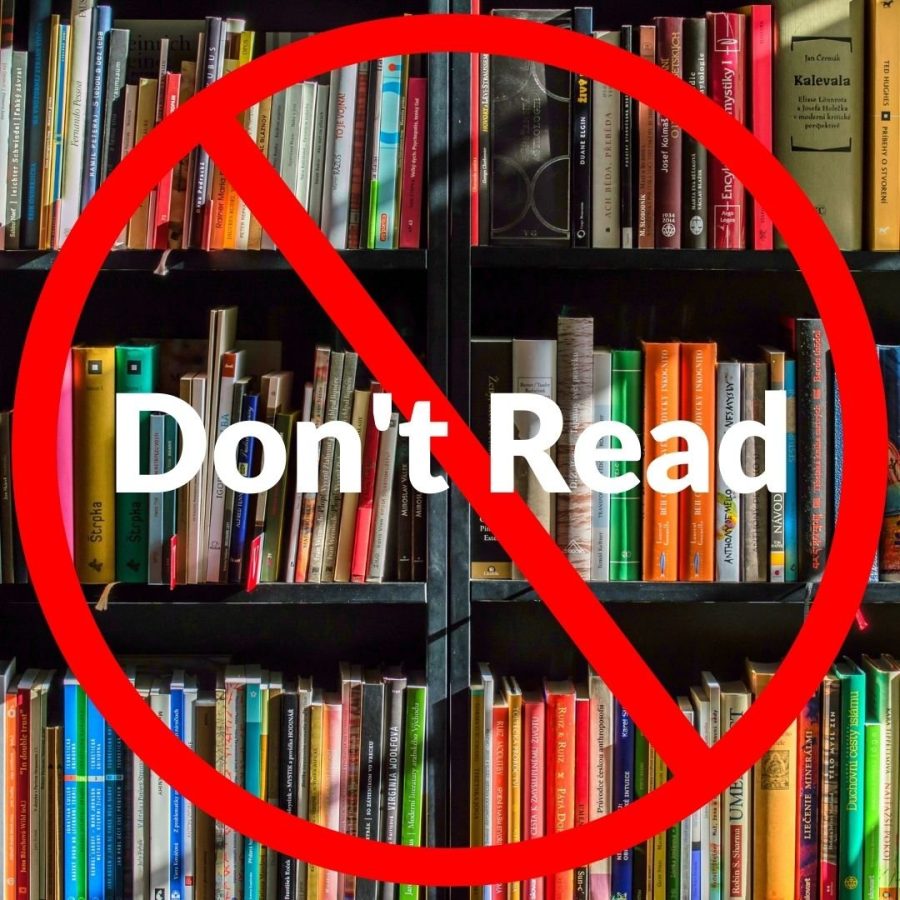Book bans in Texas are spreading like wild fires
Books centered around a minority’s experience are being flagged and pulled off the book shelves.
Powerful people trying to limit what books are written and read can be dated back to 213 B.C.
With all the ugliness and troubles faced in today’s world, reading has become a safe haven for many people.
Whether it’s a high fantasy book, a murder mystery, or just general fiction, the beauty of books is that everyone can find one and learn things from it.
Racism, homophobia, and sexual crimes have been around since the beginning of time. In this day and age, people who are affected by these problems can try to find some solace in reading books about characters who have also gone through similar experiences.
However, this is not the case anymore for many high schools in Texas. Books covering these topics are being pulled from the shelves.
Texas state representative Matt Krause sent a list of over 800 books to school superintendents due to them containing inappropriate content for students to read. This action was later amplified by Texas governor Greg Abbot, who wanted to investigate public school’s “pornography” found in some of the books.
Many lessons learned from these books can’t be found in a classroom, so now that they’re not accessible at the library, students aren’t left with many options. How is banning books allowed, and where did it even come from?
The history of banning books
Powerful people trying to limit what books are written and read can be dated back to 213 B.C! In China, emperor Qin Shi Huang burned books covering philosophy, poetry, and history, so that his people wouldn’t know about past, successful leaders.
Moving forward about 1,700 years to Martin Luther’s Reformation, books and writings by him were burned by the Pope for going against the church.
Classics that are beloved by many nowadays also made the infamous “banned-book” list.
The Catcher in the Rye by J. D. Salinger has been banned by many schools, more during the late 1900s, due to sexual content and refrences, profanity throughout the novel, and excessive violence.
Of Mice and Men by John Steinbeck is another famous classic that has faced much backlash from schools and parents. Complaints of racial slurs, offensive language, it not being “age appropriate,” and even of using God’s name in vain have all arisen from this short, 112-paged book. Another book by Steinbeck, The Grapes of Wrath, came under heat, too, for once again using the Lord’s name in vain.
A staple in highschool literature, To Kill a Mockingbird by Harper Lee, is condemned by many for its use of racial slurs, and the overall experience the black character goes through.
What books are Texas schools banning?
Suffice it to say, book bans have been around for a while. It’s unfair to say all book bans are bad, since some books perpetuate really harmful ideas for everyone. However, time and time again, books are banned for not alining with the views of people higher in power, often times white, cisgender, and straight people.
To name all the books banned in highschools in Texas would take forever, so here are 3 out of the 50+ the schools and parents are removing from the shelves:
Lawn Boy by Jonathan Evison is a coming-of-age story about a Mexican-American boy trying to overcome discrimination and discover his sexuality. The reason for banning are once agin for profanity, as well as homosexuality, pornography, and gambiling.
A book of great popularity, The Kite Runner by Khaled Hosseni, shows the relationship over the years of a wealthy boy and his family’s servant’s son in Afghanistan. Their friendship becomes tainted when the servant’s son gets raped, and that caused a mom to ask for its removal.
Set in 1954, Last Night at the Telegraph Club by Malinda Lo is about a sapphic relationship between a white teeenager and a Chinese American teenager. This book too has been flagged and deemed “inappropriate” for students to read, despite the main characters being their age.
Why does this all matter?
All of these books are centered around a minority’s experience, and they all are being flagged and pulled off the book shelves. If students can’t learn about these stories in the classroom, then they at least should be able to in their own time.



